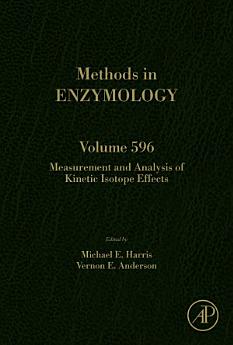Measurement and Analysis of Kinetic Isotope Effects
About this ebook
About the author
Dr. Michael E. Harris received his BS in Chemistry from Florida State University in 1986. While an undergraduate at FSU he worked in the lab of Dr. William F. Marzluff on the cell cycle regulation of histone mRNA stability. In 1992 he began graduate school at the University of Alabama at Birmingham in the laboratory of Dr. Stephen L. Hadjuk. Dr. Harris’s thesis project involved investigating the mechanism of U-insertional RNA editing in trypanosomes. Building on his emerging interest in RNA structure and function he pursued postdoctoral training at Indiana University with Dr. Norman Pace. While in the Pace Lab, Dr. Harris used crosslinking and molecular modeling to generate the first accurate model of the ribonuclease P ribozyme. Since starting his independent research lab career at Case Western Reserve University in 1996 the Harris Lab has been involved in a long term investigation of catalysis and molecular recognition of RNA processing enzymes. A central component of his research involves using tandem mass spectrometric methods developed in collaboration with Dr. Vernon Anderson for measuring kinetic isotope effects on RNA 2’-O-transphosphorylation reactions. In addition, the Harris Lab has pioneered the development of new high throughput methods for measuring RNA binding affinity and processing rates. His lab is using these novel approaches to investigate the basic principles that define the specificity of RNA binding proteins and RNA processing enzymes.
Vernon Anderson, is a program director in the Division of Pharmacology, Physiology, and Biological Chemistry, National Institute of General Medical Sciences, Bethesda, USA








